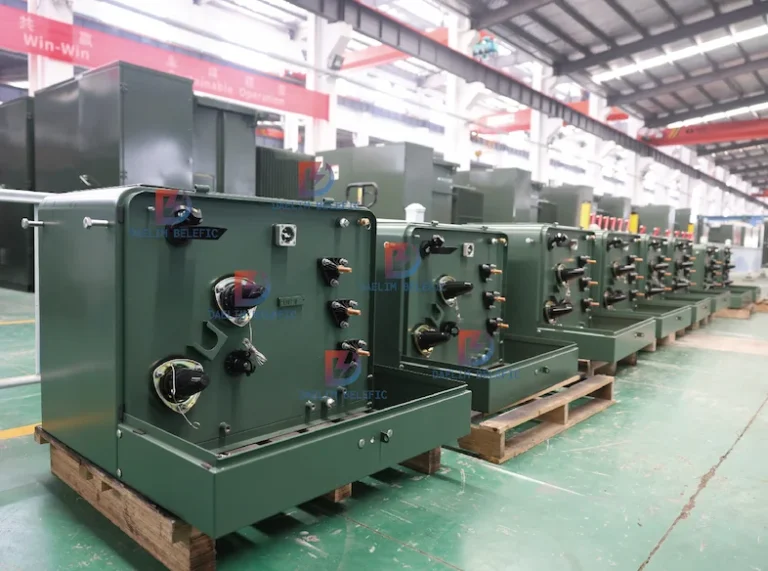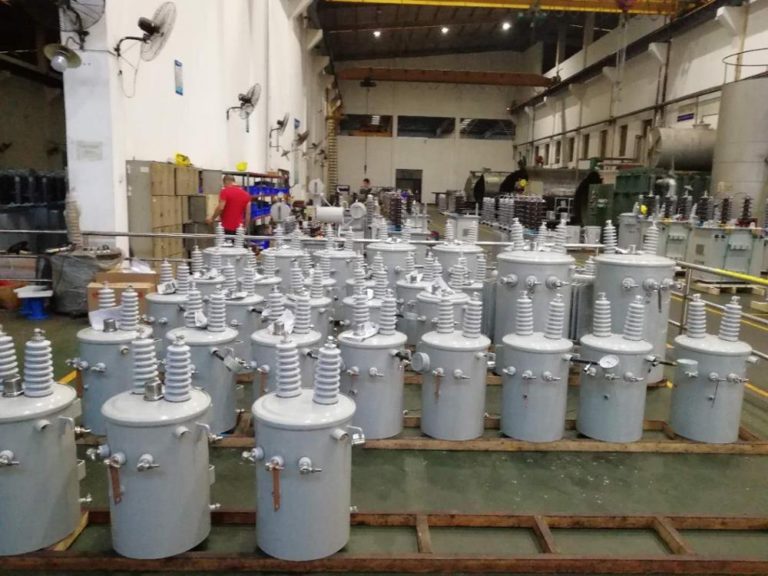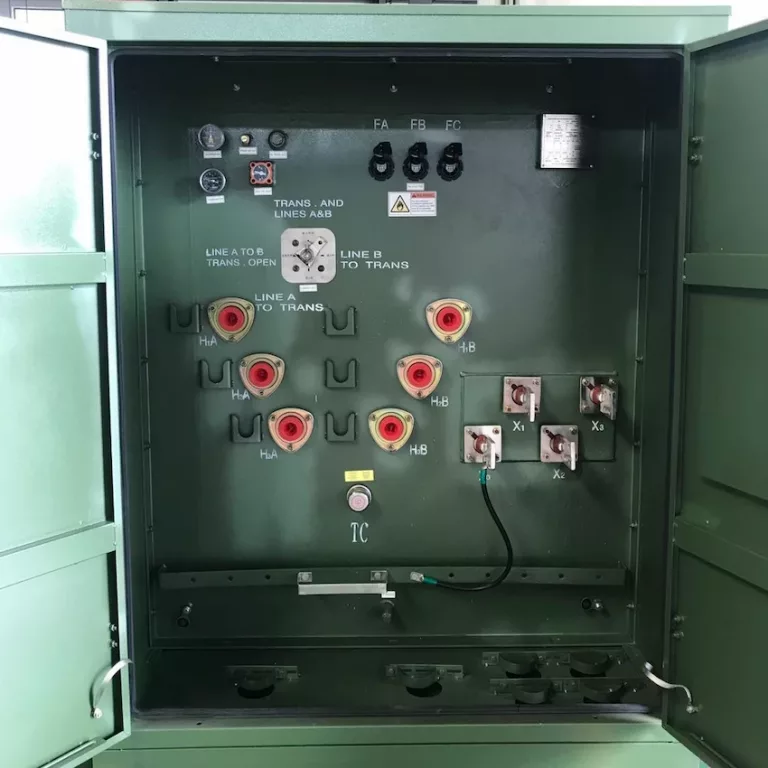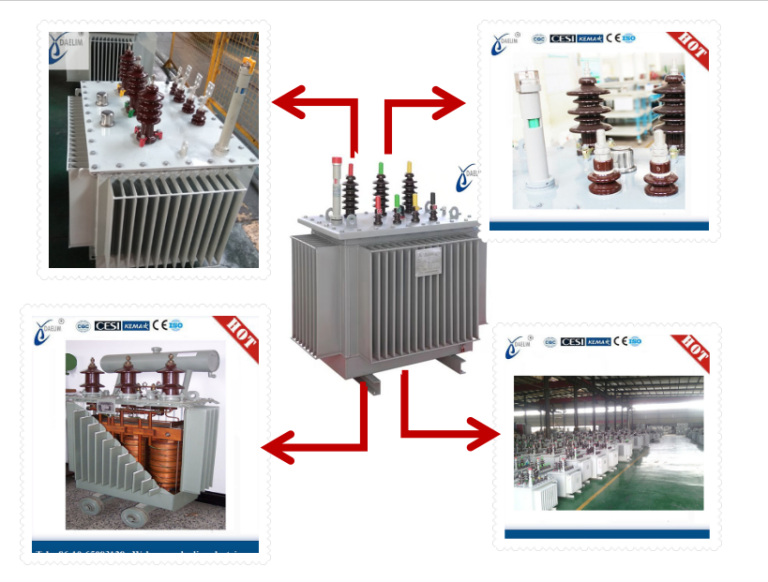ELECTRIC, WITH AN EDGE
Electric distribution companies from around the world are starting to look for more distribution transformer manufacturers since ABB distribution transformers are very limited and there are not a lot of manufacturers out there.In fact, companies are also reconsidering their purchase decision because of the lack of transformer supplies. However, choosing alternatives can never replace the efficiency of distribution transformers.
ABB distribution transformers are also known as industrial control transformers, machine tool transformers, or control power transformers. They are designed to provide excellent voltage regulation, producing an “inrush current.” An “inrush current” produces a high level of secondary voltage stability during brief periods of an overload condition.
The brand is a professional transformer manufacturer and electric equipment supplier providing quality services. With over ten years of international experience in electric power fields, DAELIM became one of the best domestic power equipment exporters and overseas project contractors.
As a top-rated electric company, DAELIM aims to solve the customers’ problems efficiently and quickly while building lasting relationships. With this intention, we continue to improve our commitment to customer service by strengthening our performance and advancing design concepts.
DAELIM is known for fifteen exceptional years of designing, engineering, and Distribution Transformer Manufacturer high-quality electric products and equipment.

Distribution transformer manufacturers purposely designed their transformers to provide the final voltage transformation within the electric power distribution system, in which stepping down or decreasing the voltage used in the distribution lines to match the level used by the consumer.
Transformers are electrical devices that transfer electrical energy from one point to another without any disruptions in the frequency. In other words, from one circuit to another.. The energy transfer will begin together with a change of voltage and current.
Another definition of what transformers are with the same working principles is that they are considered an electrical equipment that is designed to convert alternating current; from one voltage to another voltage.
The design could either be to increase (step up) or decrease (step down) voltage levels, following the magnetic induction principle.
Distribution transformers were used as early as back in the 1880’s, and since then, they have improved greatly. For instance, its material quality is manufactured efficiently, which made it far superior than it was back then.
They are relatively easy to install with little maintenance. For its noise characteristics, it has been modified to lessen the noise it produces. They are very reliable when it comes to its operation, and its running costs have been reduced.
You have probably noticed metal barrels mounted up on utility poles, these are called pole transformers and they are always located above ground level to connect power lines from houses.
There are also transformers that can be located at ground and underground level, these distribution transformers underground are called pad-mount transformers, wherein they are usually locked in steel cases..
They commonly have ratings of less than 200 kVA (kilovolt-ampere) but other national standards have units up to 5000 kVA that are still considered as distribution transformers.
These transformers operate everyday even if there is no load. This reduces iron losses which is an essential part of the transformer. Normally, distribution transformers do not operate at full loads since they are designed to be more efficient at lower loads.
For efficiency to be consistent, voltage regulations in the transformers should be kept low or to a minimum.
An ABB Distribution Transformer, also known as a typical isolation transformer, alters high voltage to the standard voltage. These are available in different sizes and efficiencies to use in electric power distribution. There are different kinds of transformers in the distribution system. These include single-phase, three-phase, pad-mounted, and pole-mounted transformers.
This is a type of transformer which operates on single-phase power. A single-phase transformer consists of two parts—first, a magnetic iron core which serves as a magnetic transformer. Second, a transformer copper winding serving as an electric part. The single-phase transformers are widely used in electronic devices.

A three-phase transformer can be constructed into two types. First, by connecting three single-phase transformers. Second, by using one pre-assembled and balanced three-phase transformer. This consists of three pairs of single-phase windings mounted onto one single laminated core.

This type is usually found in public areas, locked in a steel cupboard arranged on a concrete pad. It is generally used with electric power distribution lines at an overhead electrical line for reducing the primary voltage. A pad-mounted transformer can serve many households and large buildings.

These transformers are usually seen mounted on an electrical service pole at the height of the overhead cables. These are typically used in rural areas due to their small sizes and ease of fitting on single-pole structures. In addition, these transformers are also reliable to harsh climates when used in remote areas.
Control transformers are generally used to provide low-voltage power to control systems and devices. Which requires constant voltage and current. Generally, these can also be used as control lighting and indicator light source for electrical appliances in machine tools or equipment. These transformers incorporate high-quality insulating materials and are designed for industrial applications.
A primary transformer consists of two inductive windings and a laminated steel core. It may also consist of the following:
A core is constructed by assembling laminated sheets of steel in all types of transformers. There is also a minimum air gap between them to achieve a continuous magnetic path. The laminated sheets of steel also reduce eddy current loss. While the steel is high in silicon content and sometimes heat treated. Thus, providing high permeability and low hysteresis loss.

ABB Transformers are available in a variety of primary and secondary voltage combinations such as:
These can be found in hospitals, schools, office buildings, industrial plants, shopping centers, commercial buildings, apartment buildings, and institutional buildings.
You can control an ABB Distribution Transformer. But, it’s necessary to conduct tests frequently:
Before purchase, you must first estimate the local capacitance of the applicable electric appliance. Then choose a transformer that has an equivalent capacitance to prevent the transformer from burning. At the same time, you must also check if all data listed on the nameplate meets your requirement.
Radiation with the iron core and coil of the transformer is average. More so, the temperature should not exceed 80 ℃. If you encounter a problem with this, you must immediately shut off power, check the capacitance of the electric appliance then adjust it.
The proper size, or the VA rating, of the control circuit transformer determines the life of a transformer. More so, choosing the appropriate size will reflect the proper operation of the control devices it supplies.
Two VA values should be considered when selecting a transformer. The first value to consider is the Inrush VA that energizes electromagnetic components creating a large momentary surge current. Approximately, this will last five to twenty milliseconds and can have a value as high as ten times the transformer’s nameplate rating. This makes the inrush VA high in value and short in duration.
The second value is the sealed VA. What’s more, it determines the number of volt-amperes required to maintain the energized state of an electromagnetic force. But, this VA requirement will be five to ten times less than the inrush VA.
There is a rate used in transformer power, and this is called the VA capability. Additionally, the VA should be large enough to handle the total control power requirement. The primary voltage (input voltage) belongs to 120, 208, 240, or 460 volts. The secondary voltage (output voltage) is generally between 24 and 30 volts.
To properly size a transformer, you should select the primary voltage first. If you’ve chosen 208V as the primary voltage, then the direct tap should also be 208V. A low secondary voltage will cause a transformer malfunction.
So, how do you determine the required transformer VA? You have to multiply the secondary voltage by the required amperes.
This is the formula for determining the required transformer VA:
VA = Volts x Amperes
If you want to determine the maximum transformer current, you must divide the transformer VA by transformer secondary voltage.
This is the formula for determining the maximum transformer current:
Amperes = VA/Secondary Volts
A transformer rarely fails on its own. If a transformer fails, you most likely will have a short or overload somewhere in the control circuit.
You must first understand the intended use of the ABB Transformer for your facility. Yet, it is encouraged to oversize your transformer significantly, but never to undersize.
Oil-immersed distribution transformers are one of the most produced transformers out there since they are less expensive to their competitors without compromising performance.
But first, what are oil-immersed distribution transformers?
Basically, they are transformers that use oil as a cooling method to reduce the temperature of the transformer. Keeping it at the right temperatures at all times.
Daelim as a High Voltage Distribution Transformer Manufacturer have more than 20 years experience.
10 KV distribution transformers are considered essential equipment in the distribution network and power supply for industrial and mining enterprises. This is because for starters, their size is compact compared to other distribution transformers.
Speaking of compatibility, it is also accompanied with a simple but modern design. Moreover, you do not have to worry about noise since 10 KV distribution transformers generate low noise but this does not mean it does not have strong overload capacity.
It has both sealed and conservator type, which gives you the upper hand.
Common applications for 10 KV three phase distribution transformers are:
Compared to the 10 KV distribution transformer, the 20 KV three phase distribution transformer is slightly more versatile, powerful, and efficient.
It has more power supply capabilities, and it is better at controlling voltage qualities. Moreover, 20 KV transformers are capable of debasing the electric energy that is already lost in the system. For construction fee, this is a big help since it is energy conservative.
35 KV three phase distribution transformers wipe the other two out since they have the highest KV of them all. Furthermore, Distribution Transformer Manufacturer complies with the standard of ANSI C57.12.00, IEC60076, GB1097, and GBT6451.
In addition to that, no-load loss and on-load loss are lower. They are high-quality, safe to be operated, and widely used in the country. So, you can expect that it is reliable and so are the other two oil-immersed transformers in this list.
In this section, you will learn the various parts of distribution transformers. This gives you an idea of how to take care of its maintenance
In general, a transformer’s cores have two forms that are applied based on user demand. Namely Core-type and Shell-type. The main difference between these two forms is how the primary and secondary windings are folded or contracted to the steel core.
Core type has a form wherein the windings are turned in the transformer’s laminated core. Whereas the shell-type has its core wrapped around its components.
The process will start once the input voltage enters the primary winding. This alternates currents to move in the winding. After the current goes across, there will be a constant change and alternating field that is produced in the transformer’s core
Once the magnetic field operates through the transformer’s secondary winding, the result will be a new alternating voltage.
All transformers have windings, specifically two windings. Each winding has its own unique classification which is the primary and secondary winding. The primary winding function is to draw energy from the supply.
The second winding or secondary winding transmits electric energy to the electrical equipment.
The conservator helps store additional cooling oil that can be used or recycled after a short period of time, which is great for oil-type distribution transformers because oil sometimes runs out fast in certain temperatures and operating conditions.
The electronic relay protects the windings by preventing it from overheating. Overheating can be a really big problem because of the flammable oil inside the transformer.
The cooling medium for distribution transformers is oil. This oil keeps the transformer from overheating, which keeps it at pristine operating levels.
Input connections are also introduced as the primary section since electricity goes into the system; it should be connected to this site.
The output section has another name, which is the secondary part of the transformer. In that section, electrical energy is sent to the electric instrument in your factories or house. Commonly, the voltage in the transformer’s output section (or secondary side) is lower than in the primary section.
One of the basic differences between a power transformer and a distribution transformer is that a power type commonly has one secondary and one primary or one output and input setup. A distribution transformer may have one primary section and two or more secondary components, according to the purpose.
Like with all transformers, distribution transformer manufacturers could simply not make it as a perfect machine since it has its drawbacks as well. Nevertheless, they are great at what they do which cannot be outweighed by its disadvantages.
This section will help you form a purchase decision as well.
Below are the key advantages of distribution transformers.
Distribution transformer manufacturers purposely designed their transformers easy to use. Distribution transformers are static devices. For those of you who do not know what a static device is, it is a device or machine that has no moving parts in it.
But what about its mechanical properties above, aren’t they moving parts?
No, those are not considered moving parts since they can operate and sustain themselves through the help of the transformer’s design.
As mentioned, they are simple to operate. So, you do not have to worry about getting confused on how to operate it. DAELIM will assist you with regards to that as well.
By now, you have probably understood that transformers are essential in the distribution system and power electronic system. Distribution transformers are capable of stepping down or decreasing voltages in transmission at urban areas, and can even step up or increase currents.
Transformers is known for providing cheap and yet, very efficient methods for voltage level transformations and isolations. In fact, transformers are not as expensive as you think. Except for distribution transformers that are of the size of a car.
If you do not know what reverse connection means, it simply refers to the same transformer that can be wired to be the medium of stepping up or stepping down. However, this is not always the case since this depends on how it is installed.
This reversing feature is offered and allowed by DAELIM.
Below is where you will find the drawbacks of distribution transformers. If any of these bother you, do reconsider rather than making an impulsive buy.
As aforementioned, distribution transformers do require oil since this is their cooling medium. High temperatures will drastically reduce the lifespan of your insulating materials that is applied on windings and other components.
On the contrary, a transformer that is consistently added with insulating oil will increase its capacity to operate, which means that maintenance for its cooling medium is important.
Distribution transformers may not work or pass DC, there is a chance of it not being compatible. However, a transformer can be used to keep DC voltages on the output of a specific amplifier stage from affecting the next amplifier.
It is not surprising for transformers to have losses from time to time.
Distribution transformers are widely used electrical devices to step up and step down voltages in transmission and distribution systems but due to high VA values and quantities of transformers installed in power systems – losses occur.
Among these losses are iron losses. Iron losses are important because the transformers are consistently energized, which means that there is a lot of energy consumed by its core.
Just from the oil maintenance, you can already tell that maintaining the transformer itself does require time, patience, and effort. There are many transformers damaged every year for many reasons and this could range from natural disasters, obstructions, corrosion, etc.
This easily degrades the transformer which can lead to oil leakage, harmonics, and unbalanced loading.
This can further stress the transformer that can completely ruin it in just a matter of time. This goes to say that transformer maintenance needs to be learned as well to keep your transformer in pristine condition.
The right ABB Distribution Transformer Manufacturer secures you premium transformers, fair price, and with the best services. In other words, you will have the advantage of acquiring all the benefits that will be offered to you.
From easy installation to guiding you on how to operate everything, the best Distribution Transformer Manufacturer will provide the necessary information and guide you to everything you need to know about the product you are interested in.
Packaging: Wooden case or according to client’s requirements
The requirements for the making and reinforcement of packing boxes were strictly in accordance with the international standards.
Shipping: Land transportation/Ocean transportation
Our products have been shipped all around the world, with an extensive logistic network, we provide the best transportation option
for our clients.
15 years of business experience makes us pack well and deliver fast, satisfying our customers all over the world!
Through years of international engineering experience, Daelim as a Distribution Transformer Manufacturer is capable of producing transformers meeting various international standards, such as IEC, IEEE, ANSI, CSA.
ABB Distribution Transformers can transport a stable voltage and handle extreme current peaks. In addition, these can supply safer and more efficient power while also having less capital and maintenance costs. These are also easy to move, remove and adjust the voltage.
ABB Transformer works only for AC supply. These emit therefore require a cooling system.
During a transformer malfunction, you will usually hear a loud boom. There is also an evident power outage and a fireball that creates a large smoke.
You must stay away. Make sure to keep your family, especially children, and pets, away as well. After verifying the location of the blown electrical transformer, you must contact your power company immediately. Try not to open your home appliances, such as refrigerators and freezers, until after the power comes back on.
It depends on the severity of the damage and the scale of coverage of the transformer. For the small ones, as you might see near your house, it might take only a few hours. What’s more, this is subject to the availability of crews, hardware, and weather conditions. The big ones, such as companies, factories, etc., may take a month or so.
ABB Distribution transformers are excellent devices for regulating voltage levels. They are easy to use and very efficient. I personally find them great since they are convenient, and it did not cost me much as well.
Should you have further questions and concerns, you can easily contact DAELIM’s team of professionals High Voltage Distribution Transformer Manufacturer to help you with whatever it is you need clarifying. Do not hesitate to ask assistance for your purchase decision as well because the wrong transformer could put you and your surroundings in danger.
ELECTRIC, WITH AN ENGE-- DAELIM BELEFIC